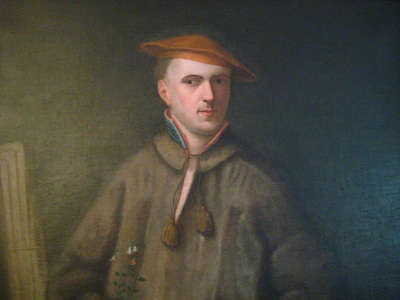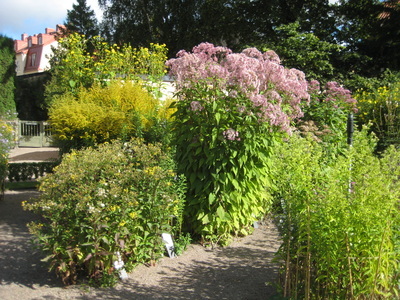
You could say he’s the father of all gardeners — all modern gardeners, anyway. Karl Linne (or Carolus Linnaeus, to use the Latin form of his name, which he preferred) had a garden with thousands of species of plants in it. And he named every one of them himself.
His life’s ambition, in fact, was to name every living thing on earth. If he didn’t quite succeed, it wasn’t for lack of trying. He named approximately 15,000 living organisms. Homo sapiens. Canis familiaris. Apis mellifera. In the early 1700s, the young Linnaeus came up with the idea that all living things should have only two names, in Latin (a language all educated people would have no trouble understanding, he thought). This was a revolutionary idea, using only two words instead of the ten or twelve-word names for plants and animals that were common at the time.
To this day, gardeners use the names he chose. Often, he named particularly beautiful plants after friends or people he admired. Rudbeckia, for example, more commonly known as Black-eyed Susan. Linnaeus was so impressed by the beauty of this American flower, sent to him by a collector, that he gave it the name of his mentor and beloved professor, Olaf Rudbeck.

I’ve just been visiting Linnaeus’s garden in Uppsala, Sweden, and I felt right at home. I recognized many familiar plants. Plantago major, also known as common plantain, the ubiquitous lawn weed. There it was, carefully planted and labelled in the garden. Zea mays. Or, to use its common name, corn. Solanum tuberosum, or potatoes. In Linnaeus’s day, these plants were prized specimens, valued for their use as food or medicine. The garden was protected by a low but dense hedge – passers-by could admire the plants from a distance, but couldn’t steal any of them.
By far the most flamboyant part of Linnaeus’s garden was the section devoted to American plants. “We are grateful” Linnaeus wrote, “to the soil of Virginia.” (America was sometimes referred to as Virginia). Carefully arranged in neat plots were luxuriant growths of rare New World specimens, exciting exotics in Linnaeus’s time: Black-eyed Susans. Pokeweed. New England aster. Joe-Pye weed. And especially gorgeous, several species of tall and elegant goldenrod. (Which, as Linnaeus knew, does not cause hay fever, as the pollen is not windborne, but carried by bees.)
Linnaeus used all these plants to teach thousands of enthusiastic students about the wonders of botany and his own new system of naming and classifying plants. He called the garden his “living textbook.” Linnaeus lived for thirty-five years in a cozy little house in a corner of the garden, where he raised five children as well as thousands of species of plants. He had pets in the garden, too: monkeys, parrots, and a strange animal from America, called a “raccoun.” There was a glassed-in greenhouse for tropical plants, but the hardy Americans could withstand even Swedish winters. “In my garden,” Linnaeus wrote, “I live happy as a king.”
Next time you walk the Arboretum trails, take a moment to appreciate the goldenrod, asters and black-eyed Susans – common as mud to us, but rare imported specimens cherished by the “Prince of Botanists” (Linnaeus’s description of himself.)
